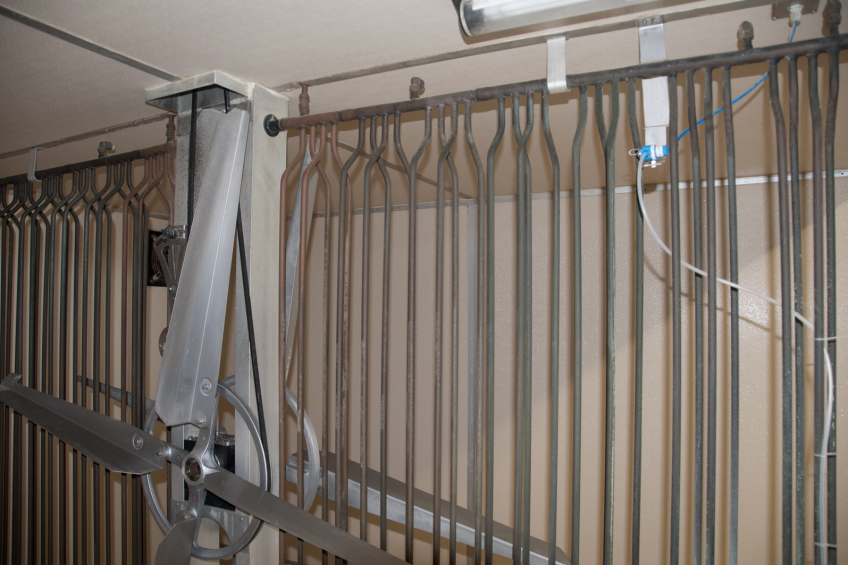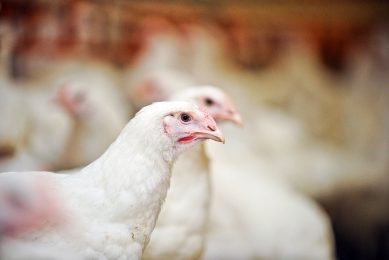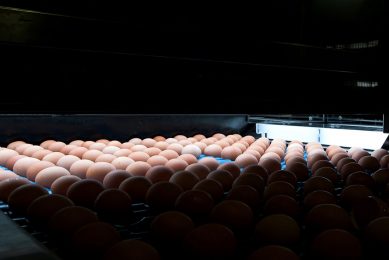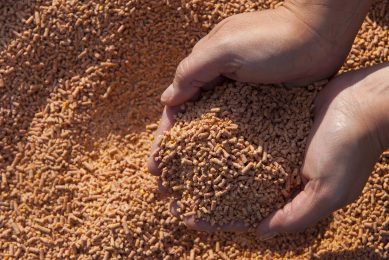Replacing formaldehyde in hatcher disinfection

The hatchery sector has proven their dynamic attitude to replace formalin in the disinfection area by a safer and better alternative. This rapid movement has been instigated by the latest developments. Promising results of the ?formalin-free hatcher disinfection protocol pave the path for the hatcheries to finally implement their protocols for egg disinfection without ?formalin, from start to finish.
Hatcheries are on top of the poultry production pyramid with a lot of high skilled, experienced and well educated people leading them forward. Furthermore the industry is a very international one where certain decisions on hatchery level can relatively easily and quickly be implemented throughout, for example a breeder company or an integration within a certain region and even beyond. Consequently the hatchery industry is very much in tune with new developments and innovations in the market worldwide. This is also reflected in the way information is shared by specialists communicating through scientific seminars, fairs, world congresses and specialised press.
Banning formaldehyde
An alternative application for formaldehyde is one of those developments that the hatchery industry has picked up well. Banning formaldehyde out of the hatchery is becoming more and more a part of the standard protocol in hatcheries. It’s a well-known fact that legislation in terms of the exposure limit of formaldehyde to the people working in the hatchery is getting stricter by the day since many years now.
There are two ways of defining the exposure limits to formaldehyde. The first way gives a combination of a time-weighted-average concentration over 8hrs (TWA) and a short-term-exposure-limit during 15 min (STEL), from which the values can vary from country to country. The TWA in the Netherlands for example is 0.12 ppm when in France its 1 ppm. The STEL has more or less the same variation. The second way is the MEL, the maximum exposure limit. This is the strictest legislation which states that nobody can be exposed to more than 0.3 ppm formaldehyde at all times. Belgium, Canada and Denmark for example have implemented this legislation. It’s fair to say that the exposure limits to formaldehyde and according legislations have become stricter every year, regardless which method of monitoring (TWA, STEL or MEL) is opposed.
Therefore the difference between several years ago and today is that the hatcheries are not only talking about it anymore but are actually also taking action. Tests are set up everywhere with various products and applications in order to find a true alternative for formaldehyde.
A true alternative for formaldehyde
So it’s clear that these human health issues are putting a lot of pressure on the current formaldehyde protocols implemented in the hatcheries. In 1953 Lancaster & Crabb found that, in order to kill S. pullorum on the eggshell using a 20 min fumigation period, a minimum concentration of 600 mg formaldehyde per m³ ( 10g paraformaldehyde or 45ml 40% formalin and 30 g KMnO4 ) at 21°C is necessary. The reason why this amount of 10g paraformaldehyde per m³ never was exceeded, is because research has shown a significant relationship between embryonic mortality, duration of fumigation and the concentration of formaldehyde.
A significant decrease (8 %!) in hatchability was reported when the formaldehyde fumigations were used at higher duration (40min) and higher concentration (12.5g/m³). So from an economical point of view, using more formaldehyde never was an option. Now with a MEL of 0.3ppm it is definitely out of the question. It’s needless to say that the human health issue in 1953 was not taking into account or less relevant.
The problem lies also with infrastructural difficulties. If formaldehyde is used it will mean that bigger air evacuation systems must be implemented and a much longer air evacuation time needs to take place before people can enter the fumigation rooms. In practice this turns out to be an almost impossible nut to crack. Two hours after air evacuation and fumigation of only 5g/m³ of paraformaldehyde, the MEL of 0.3 ppm still is exceeded by 14 times. Therefore using less formaldehyde doesn’t really makes it any easier to stay working within the allowed exposure limits, it also of course raises questions on its bactericidal efficacy.
Alternative products
It’s quite remarkable that this protocol was the reference for > 50 years. However in the last 2-3 years the industry has really picked up speed in search of alternative products and methods to overcome this issue. Disinfecting hatching eggs by fumigating or cold fogging them with a disinfectant solution is a practice which is widely used and appreciated. Mainly because during this procedure the eggs don’t get wet and the protocol also can be fully automated.
Virocid, a combination of glutaraldehyde and multi chain quaternary ammonium produced by CID Lines, has proven to be one of those true alternatives for formaldehyde for the disinfection of hatching eggs before setting. The Virocid-protocol for egg disinfection is based on extensive field trials and up to date feedback and information from hatcheries that currently are applying the protocol.
Every droplet counts
The research has shown that the relation between the droplet size of the vapour (“fog”), the contact angle (wettability), the type and concentration of the chemicals used, have a huge impact on the success of the disinfection results of the hatching eggs. There is a significant difference between the log reduction of formaldehyde and Virocid. In ultrasonic fogging Virocid has the same disinfection value as formaldehyde. In cold foggers Virocid is significantly better then formaldehyde. This can be explained by the different droplet sizes of both fogging principles. A very small droplet has a big contact angle, a bigger droplet a smaller contact angle (see image 1).
The contact angle will determine the wettability. The wetter a surface gets by a disinfectant solution, the more the solution can act upon that surface, and therefore disinfect. That’s also why the eggs when fogged with an ultrasonic fogger stay dry. The droplets are so small they bounce against the surface without bursting open and wetting it. With cold fogging the eggs are slightly moist to moist. With cold fogging the eggs are slightly moist. To create an optimal fog, for maximum disinfection results, CID Lines offers a spraying nozzle which guarantees even spread of droplets with the required micron diameter droplet size.
Swabbing method
The eggs were swabbed with the ‘EGG SHELL RINSE METHOD’. An egg is swirled in a bag with 10ml warm, buffered salt solution. The bag is sealed afterwards and kept at 4° until it arrives at the lab. There the 0.1ml of the solution is gets plated on an AGAR for incubation at 37°C. After the incubation period the CFU’s are counted from the AGAR plates. In this way 100% of the egg shell surface could be swabbed which gives a much higher, but also a much more accurate, bacteria count than would have been the case if eggs were sampled by contact agar plates.
Control box of the fog system.
Every time the two batches, one that was fumigated with formaldehyde and the other fogged with Virocid, were swabbed. The eggs compared within the batches were originated from the same flock/house with the eggs having a similar age.
After fogging and air evacuation times, the air was sampled in the fumigation room to measure the remaining glutaraldehyde in the air. For glutaraldehyde (a.s. in Virocid) the maximum exposure limit is 0.05 ppm. Thus, in order to be in compliance with legislation people cannot enter the fumigation room before the MEL is below 0.05 ppm.
The aim is to define if personnel entry after 30 min active ventilation is possible and in compliance with legislation. When respecting the Virocid-protocol, the maximum exposure limit of 0.05 ppm is not exceeded and disinfecting procedure from start to finish can be concluded within the hour (Table 1).
Disinfection before setting
Several trails were done repetitively. The complete procedure was limited to 1 hour, from start of fogging to taking out the trolleys for setting (personnel entry). In Table 2 the methods and results are summarised. Due to the positive results and reactions from the field, CID Lines has further investigated the possibilities to also replace formaldehyde with Virocid for hatcher disinfection. After 18 days the eggs are transferred to the hatchers were they are ready for the final stage of the hatching process.
Before the hatching eggs can enter the hatchers, the hatchers should of course be well cleaned and disinfected. To support the hygienic circumstances during this period in which the chicks are finally going to hatch, the common practise today is to evaporate formalin in the hatcher. Hence this is a labour intensive activity and the goal is to ban formaldehyde completely from the hatchery, CID Lines has developed a fully automated protocol for hatcher disinfection.
Each hatcher is equipped with a spraying nozzle which automatically sprays the Virocid solution according to the time intervals that are set in the control box. Field trials (Table 3) have shown a significant lower mortality % during the first week of the birds’ lives when hatcher fumigation was being applied with a Virocid solution of 2%.












